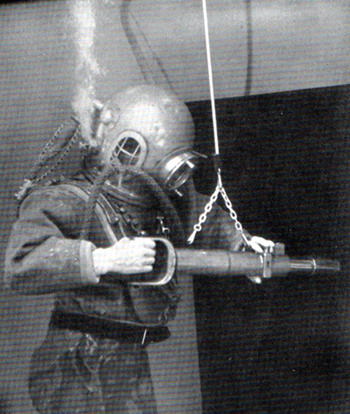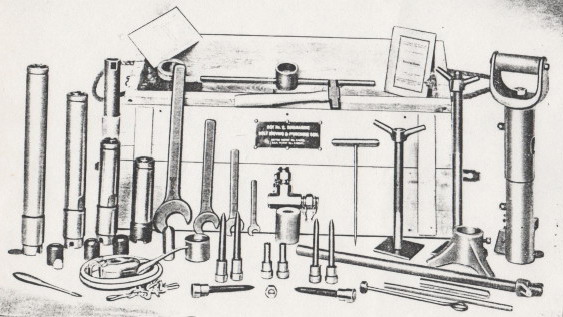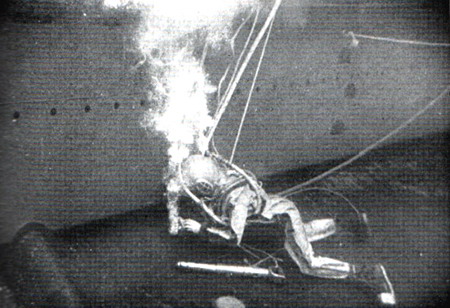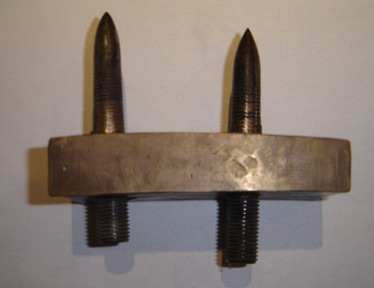| A diver using a Cox Bolt Driving Tool. |
 |
Prior to the invention of the submarine Bolt driving tool and punching
gun the diver may have spend many hours drilling, tapping and screwing
bolts into steel and wood. It quickly became an indispensable piece of
equipment for the underwater salvor. Repairs could be done in a matter
of hours rather than days. This became so important as it allowed the
salvor to recover valuable cargo before deteriation. In other cases a
temporary repair could be effected allowing the ship to be removed from
enemy exposure during conflict and from the conditions of the weather
and tide. The Bolt driving and punching gun could be used for a wide
varity of uses, operators often finding new uses for the tool. Patching
of large and small holes could be made and rivets could be tightened by
firing a bolt through them. Brackets, eye bolts and plugs could be
easily attached in a few minutes.
The gun was operated by an explosion which drove a solid or hollow bolt
into steel or wood. There was no recoil or flash with the gun under
normal operation. Whilst the solid bolt was used for fixing, the hollow
bolt could be used to attach an air line or the means of passing through
the plate of a cable. By fixing an air line to a submerged vessel it was
possible to supply trapped sailors with a vital air supply. The barrel
of the gun was loaded on the surface and lowered to the diver. Loaded
sealed barrels could be carried by the diver and inserted into the gun.
Providing the diver was fed with new barrels he could work continuously
and therefore complete the operation in a timely manner.
The gun comprises of a number of components and here we describe the Cox
Submarine Gun. There is one size, weighing 36 lbs. which comes with a
barrel for bolting and one for punching. There were 7 inch bolting and
punching barrels. The bolt ammunition was 5/8 inches in diameter and 4
1/2 inches long. The bolt was heat treated and made of alloy steel with
a tensile strength of 16 tons. A 3/4 inch plate required a force of 12
tons to fix through. The punch ammunition is 11/16 inches in diameter
and punches a hole to suit the size of the bolt. Extension bolts were
used for fixing patches of wood and were 1 inch in diameter. To these,
wing nuts could be attached. The weight of the gun as we have mentioned
earlier was 36 lbs, and could be tiring if many holes were to be
punched. To relieve the weight 2 eye bolts were attached to the gun and
springs or elasticated rope fixed. The gun was then lowered to a
position a couple of feet above the diver who could easily pull into
position for firing and then returned away from the work area.


